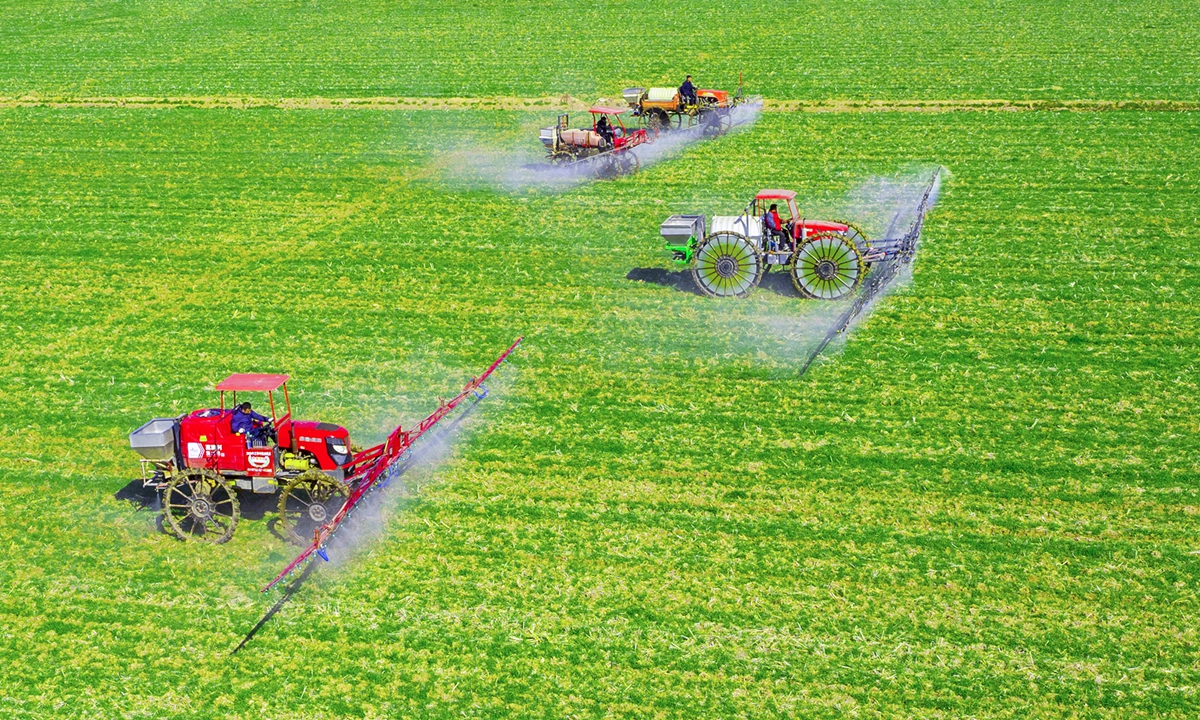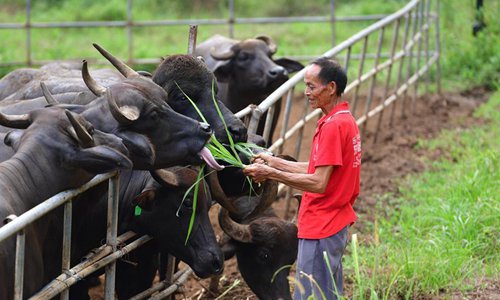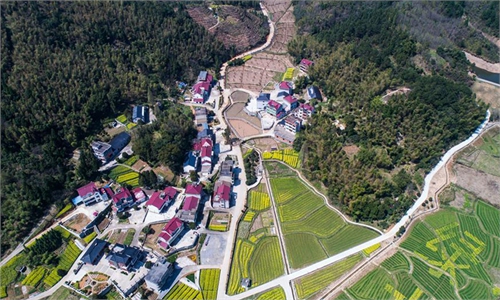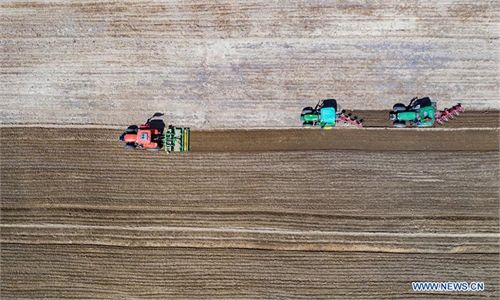No.1 central document vows rural vitalization
Document details plan to advance modernization of agriculture, rural reforms

Farmers run tractors through wheat fields in Suqian, East China's Jiangsu Province on Thursday, right after the weeklong Spring Festival holiday. Around China, 22 million tractors and various types of specialized agricultural machinery are at the ready, according to the Ministry of Agriculture and Rural Affairs. Photo: VCG
China's central government unveiled the "No. 1 document" for 2021 on Sunday evening, renewing its emphasis on the country's rural area and agricultural sector, while also bringing in more urgent issues such as tackling core bottlenecks in agricultural technologies, strengthening the homegrown breeding system as well as the road ahead after the poverty alleviation campaign in rural areas.
"To revitalize the nation, rural areas must be revitalized," reads the document, stressing efforts to comprehensively push forward rural vitalization and accelerate the modernization of agriculture and rural areas.
As the first policy statement released by China's central authorities each year, the document is seen as an indicator of policy priorities. Work on agriculture and rural areas has been high on the agenda for 18 consecutive years, said a report from the Xinhua News Agency.
Apart from routine issues such as long-term policy to guarantee farmers' incomes, improve infrastructure and basic public services in rural areas, analysts pointed out that the country's top policymakers are prioritizing "self-reliance" in this year's document given the challenges the country is facing.
"The direction pinpointed in the document draws on issues that occurred in the new situation, for example, the coronavirus-plagued 2020, and potential challenges in the next few years," Jiao Shanwei, editor-in-chief of cngrain.com, a website specializing in grain news, told the Global Times on Sunday.
Over the past year, the problem of rising food prices that plagued the world seems to be intensifying. The COVID-19 pandemic has affected the food supply chain, paralyzed transportation and ultimately increased global food prices, highlighting the demand for the world's second-largest economy to strengthen self-reliance in grain supply.
During the 14th Five-Year Plan period (2021-2025), the Communist Party of China will regard work concerning agriculture, rural areas and farmers as its top priority, said the document.
Functional grain production zones and important agricultural production protection zones should be constructed, and a national food security industrial belt should be built, according to the document, which also mentions the need to optimize the layout of agricultural products trade and implement a strategy of diversifying agricultural products.
The document vows to hold the "red line" of 1.8 billion mu (120 million hectares) - an area about the size of South Africa - of arable land, strictly implement land use control, and aims to build 100 million mu of high-standard farmland to ensure harvests, high yields and stable production within the year of 2021.
In addition to the importance attached to guaranteeing the planting area, the country also made its key point once again in the No.1 document by illustrating its blueprint for the breeding system.
The protection, development and utilization of agricultural germplasm resources should be strengthened and the implementation of major scientific and technological projects in agricultural biological breeding should be accelerated, the document reads.
"For breeding system, it is a long-term goal since it plays a stabilizing role in the agricultural economy and we cannot lose ground," said Jiao, adding that breeding system security will enable agriculture to survive in extreme situations like China-US trade war.
Road ahead
After China announced a major victory in its poverty alleviation campaign in December 2020, ahead looms a problem: what is the future for Chinese villages? The No.1 policy document draws a clear picture of its road to a better tomorrow.

A villager feeds a herd of cattle at Gulantun Village in Daliang Township of Rongan County, south China's Guangxi Zhuang Autonomous Region. (Xinhua/Huang Xiaobang)
Through eight years of sustained work, China has lifted all rural poor under the current standard out of extreme poverty and nearly 100 million impoverished people have shaken off poverty. China has also removed all impoverished counties from the poverty list, and eradicated absolute poverty and regional poverty.
The document stresses that the next step is to consolidate and expand achievements in poverty alleviation. It urges the country to improve the dynamic monitoring and assistance mechanism to prevent people from falling back into poverty and promptly identify and assist those at risk of falling back into poverty.
For example, the document says the country will focus on large and medium-sized resettlement areas, and people who move there will be assisted with employment. Meanwhile, it will continue to improve supporting infrastructure in resettlement areas, including public service facilities, industrial parks and community governance capability.
Rural revitalization serves as an anchor for the country's economic growth and social stability. It is not merely a matter of food security, but also a matter of labor supply and national development, experts on agricultural studies said.
The Chinese central government is starting to focus more on how to stimulate "internal cycle" in rural areas for the next five years, as after people in rural villages were lifted out of extreme poverty, how to improve their capability to sustain themselves is a key problem, experts said.
In the document, it says China will encourage more people who have lifted themselves out of poverty and those with low incomes to find jobs in local and nearby areas. Meanwhile, it will focus on building a number of major regional and trans-regional infrastructure projects in poverty alleviation areas.
Previously, the rural economy relied on government support to build roads. After this is accomplished, establishing water conservancy projects, promoting the agricultural products processing industry and enhancing villages' transport capability might be a direction for the next step, experts said.
Chinese experts pointed out that the unprecedented global health crisis of the COVID-19 pandemic poses a great challenge to rural governance: its ability to deal with public health emergencies and the employment condition of migrant workers.
The resurgence of COVID-19 in North China's Hebei and Northeast China's Heilongjiang provinces this winter sounded an alarm regarding gaps in epidemic control in rural areas, as most patients in the outbreaks are elderly people from rural areas, many suffering chronic disease.
The No. 1 document for 2021 requires township health centers to improve medical service capacity and vows to build central health centers to deal with major epidemic and public health emergencies. It also pledges to strengthen care and services for rural left-behind children, women, the elderly and children in dire straits.
The document also highlights on the Party's construction of grass-roots organizations and rural governance, as well as the construction of spiritual civilization in rural areas. It vows to intensify efforts to crack down on illegal religious activities in rural areas and overseas infiltration.
Urbanization must not come at the expense of rural decay, Chinese analysts said, noting that promoting rural revitalization is the major task to realize the great rejuvenation of the Chinese nation.






